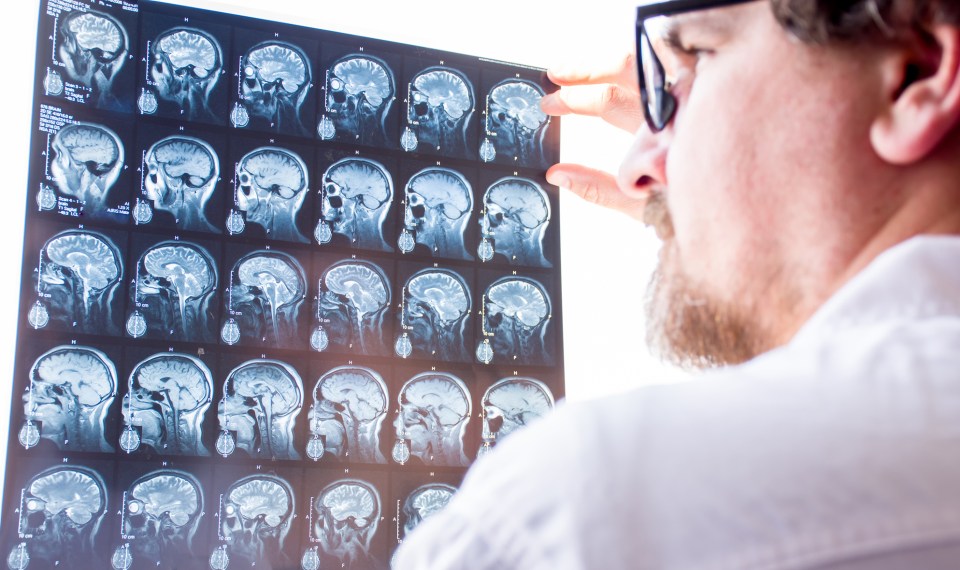It only took a few minutes for your stroke to change you and your loved one’s life forever. First you were in the acute care hospital undergoing scans, clot busters and the hectic pace of the ICU. Then on to the challenging work of rehabilitation—the hardest work you have ever done, but worth every moment. Finally, the big day when you get to return home to life after stroke.
You have thought about being back in your favorite recliner with your dog cuddled up in your lap. The special feeling of your own bed and your favorite pillows that rest comfortably on each other. But there are challenges that come with being home. The rehabilitation hospital had a schedule and lots of smiling, encouraging staff.
Your first morning at home is quiet, but a month later, you are trying to figure out how spend your time, other than therapy. Your recliner is getting too familiar, and daytime television is mind numbing. It is time to organize your “new” life, but how do you do it?
Encompass Health joined the American Heart Association/American Stroke Association in developing a comprehensive guide to navigating life after a stroke. Download the free guide.
Life after Stroke
Everyone’s interests and tastes are different. That is what makes life interesting. You may need a little push or starting point to figure out how to move forward after your stroke. The COVID-19 pandemic hasn’t helped, as we are more isolated and many old activities may not be available or safe. However, your “life after a stroke” offers many opportunities.
Can’t Do versus Can Do
It is natural to focus on how your stroke has changed things. It may be more difficult to speak or walk. However, there is still a long list of things that you “can do.” Start making a list of the “can do’s” and you will be surprised how long it gets. Can you still participate in Sunday dinner with your family? Can you listen to audio books or help your spouse prepare meals? You get the idea. Ignore the list of “can’t do’s” and start the “can do” list. It will grow every day.
Hope and Optimism
Hope consists of wanting something and perceiving it can be achieved. Hope is a partner of “can do.” It is important to set small goals that can be victories. Make a brief list of some goals that you can achieve. This leads to the optimism that you will achieve the next goal.
Have a Schedule
This is essential. What time will you get up and out of bed? You must get dressed every day. Showers are essential. People feel better dressed in clothes. It can be “pull on” pants and a T-shirt, but not pajamas. Do you have exercises to do or people to call?Connect with Others
It is far too easy to get isolated, and the pandemic has made connecting with others more difficult. I created a list of people I want to stay in touch with and put a checkmark next to their name every time I call or email them. I try to touch base once a week. It works. If you can visit outside or safely inside, do so. Visiting can be exhausting, so don’t be embarrassed to tell people politely that it is time to leave.
Organize Your Team
Your spouse or partner may need to help here. Who can you count on? When people say, “Let me know if I can help,” a good reply is to be truthful and say something like, “We could use help on Wednesdays when Joe needs to get a haircut.” Different members of the “team” will be able to help in different ways. It may be as simple as two hours each week or a ride to the doctor.
Go Outside
Being in the hospital for weeks is hard enough. Part of your schedule has to be getting outside. It may be winter and colder, but that is what jackets, hats and gloves are for! Remember when you played tennis, golf or jogged? You may need to set up an “enjoy the outdoors” place in your back or front yard to smell the air, hear the birds and wave at a neighbor.
Get Help if You Feel Blue
It is normal to be distressed, upset and even depressed after a stroke. You didn’t go online to Amazon Prime and ask for a stroke. But people are remarkably resilient and you can do this. The temptation is to always feel you can do it on your own, but your “team” and a schedule can really help. However, you may also need some professional help, so ask your rehabilitation team where you can get that help. Medications and “talk therapy” are very helpful. Virtual support groups are also a valuable resource. I like to say that these people are “members of the same club.” They know what you are feeling and have been on the journey to feeling better. The other stroke survivors know where to find the help you need.
Don’t feel like you need to tackle all these seven tips at once. Look at the list and start with the one that most appeals to you and then add to the list. The seven tips also apply to the able-bodied, so recruit your spouse or partner to join you on this journey.
There is life after a stroke, and it is a good life.
The content of this site is for informational purposes only and should not be taken as professional medical advice. Always seek the advice of your physician or other qualified healthcare provider with any questions you may have regarding any medical conditions or treatments.




